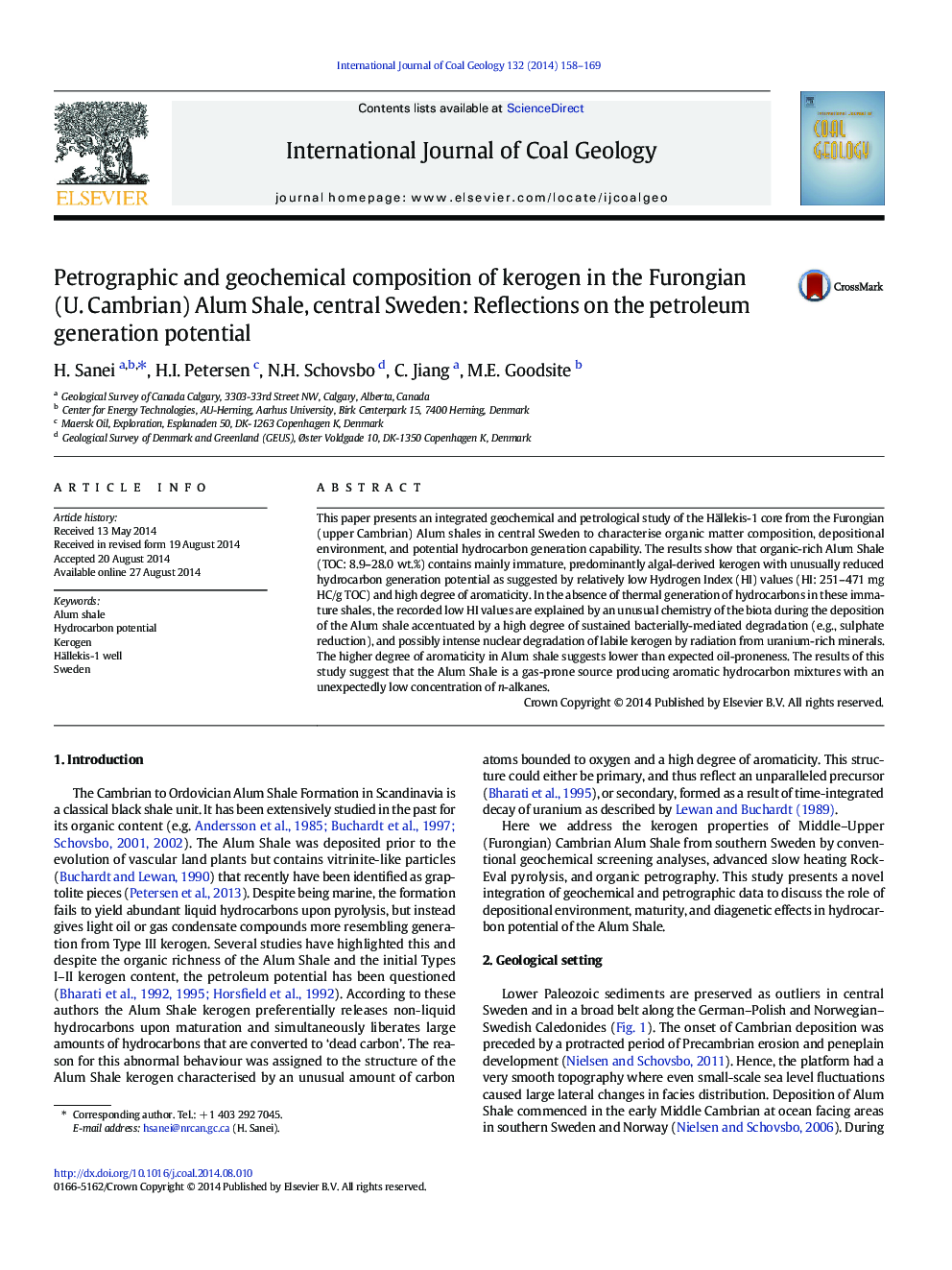| Article ID | Journal | Published Year | Pages | File Type |
|---|---|---|---|---|
| 1753221 | International Journal of Coal Geology | 2014 | 12 Pages |
•Organic-rich, U. Cambrian Alum shale from central Sweden showed unusual geochemistry.•Kerogen is characterised as immature, algal-derived but with increased aromaticity.•Higher degree of aromaticity is inherited from unusual kerogen composition.•This accentuated by intense bacterial degradation and in-situ uranium radiation.•Alum shale has lower than expected oil-proneness and favours gas generation potential.
This paper presents an integrated geochemical and petrological study of the Hällekis-1 core from the Furongian (upper Cambrian) Alum shales in central Sweden to characterise organic matter composition, depositional environment, and potential hydrocarbon generation capability. The results show that organic-rich Alum Shale (TOC: 8.9–28.0 wt.%) contains mainly immature, predominantly algal-derived kerogen with unusually reduced hydrocarbon generation potential as suggested by relatively low Hydrogen Index (HI) values (HI: 251–471 mg HC/g TOC) and high degree of aromaticity. In the absence of thermal generation of hydrocarbons in these immature shales, the recorded low HI values are explained by an unusual chemistry of the biota during the deposition of the Alum shale accentuated by a high degree of sustained bacterially-mediated degradation (e.g., sulphate reduction), and possibly intense nuclear degradation of labile kerogen by radiation from uranium-rich minerals. The higher degree of aromaticity in Alum shale suggests lower than expected oil-proneness. The results of this study suggest that the Alum Shale is a gas-prone source producing aromatic hydrocarbon mixtures with an unexpectedly low concentration of n-alkanes.
